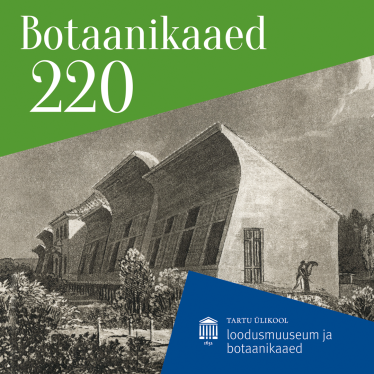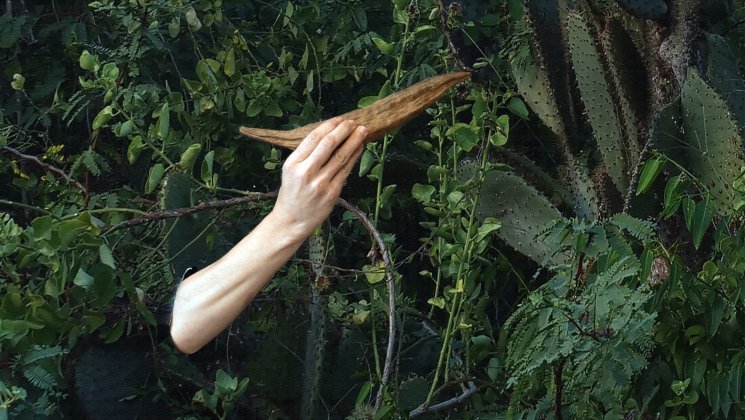-
Faculty of Arts and HumanitiesDean's Office, Faculty of Arts and HumanitiesJakobi 2, r 116-121 51005 Tartu linn, Tartu linn, Tartumaa EST0Institute of History and ArchaeologyJakobi 2 51005 Tartu linn, Tartu linn, Tartumaa EST0Institute of Estonian and General LinguisticsJakobi 2, IV korrus 51005 Tartu linn, Tartu linn, Tartumaa ESTInstitute of Philosophy and SemioticsJakobi 2, III korrus, ruumid 302-337 51005 Tartu linn, Tartu linn, Tartumaa EST0Institute of Cultural ResearchÜlikooli 16 51003 Tartu linn, Tartu linn, Tartumaa EST0Institute of Foreign Languages and CulturesLossi 3 51003 Tartu linn, Tartu linn, Tartumaa EST0School of Theology and Religious StudiesÜlikooli 18 50090 Tartu linn, Tartu linn, Tartumaa EST0Viljandi Culture AcademyPosti 1 71004 Viljandi linn, Viljandimaa EST0Professors emeritus, Faculty of Arts and Humanities0Associate Professors emeritus, Faculty of Arts and Humanities0Faculty of Social SciencesDean's Office, Faculty of Social SciencesLossi 36 51003 Tartu linn, Tartu linn, Tartumaa EST0Institute of EducationJakobi 5 51005 Tartu linn, Tartu linn, Tartumaa EST0Johan Skytte Institute of Political StudiesLossi 36, ruum 301 51003 Tartu linn, Tartu linn, Tartumaa EST0School of Economics and Business AdministrationNarva mnt 18 51009 Tartu linn, Tartu linn, Tartumaa EST0Institute of PsychologyNäituse 2 50409 Tartu linn, Tartu linn, Tartumaa EST0School of LawNäituse 20 - 324 50409 Tartu linn, Tartu linn, Tartumaa EST0Institute of Social StudiesLossi 36 51003 Tartu linn, Tartu linn, Tartumaa EST0Narva CollegeRaekoja plats 2 20307 Narva linn, Ida-Virumaa EST0Pärnu CollegeRingi 35 80012 Pärnu linn, Pärnu linn, Pärnumaa EST0Professors emeritus, Faculty of Social Sciences0associate Professors emeritus, Faculty of Social Sciences0Faculty of MedicineDean's Office, Faculty of MedicineRavila 19 50411 Tartu linn, Tartu linn, Tartumaa ESTInstitute of Biomedicine and Translational MedicineBiomeedikum, Ravila 19 50411 Tartu linn, Tartu linn, Tartumaa ESTInstitute of PharmacyNooruse 1 50411 Tartu linn, Tartu linn, Tartumaa ESTInstitute of DentistryL. Puusepa 1a 50406 Tartu linn, Tartu linn, Tartumaa ESTInstitute of Clinical MedicineL. Puusepa 8 50406 Tartu linn, Tartu linn, Tartumaa ESTInstitute of Family Medicine and Public HealthRavila 19 50411 Tartu linn, Tartu linn, Tartumaa ESTInstitute of Sport Sciences and PhysiotherapyUjula 4 51008 Tartu linn, Tartu linn, Tartumaa ESTprofessors emeritus, Faculty of Medicine0associate Professors emeritus, Faculty of Medicine0Faculty of Science and TechnologyDean's Office, Faculty of Science and TechnologyVanemuise 46 - 208 51003 Tartu linn, Tartu linn, Tartumaa ESTInstitute of Computer ScienceNarva mnt 18 51009 Tartu linn, Tartu linn, Tartumaa ESTInstitute of GenomicsRiia 23b/2 51010 Tartu linn, Tartu linn, Tartumaa ESTEstonian Marine Institute0Institute of PhysicsInstitute of ChemistryRavila 14a 50411 Tartu linn, Tartu linn, Tartumaa ESTInstitute of Mathematics and StatisticsNarva mnt 18 51009 Tartu linn, Tartu linn, Tartumaa EST0Institute of Molecular and Cell BiologyRiia 23, 23b - 134 51010 Tartu linn, Tartu linn, Tartumaa ESTTartu ObservatoryObservatooriumi 1 61602 Tõravere alevik, Nõo vald, Tartumaa EST0Institute of TechnologyNooruse 1 50411 Tartu linn, Tartu linn, Tartumaa ESTInstitute of Ecology and Earth SciencesJ. Liivi tn 2 50409 Tartu linn, Tartu linn, Tartumaa ESTprofessors emeritus, Faculty of Science and Technology0associate Professors emeritus, Faculty of Science and Technology0Area of Academic SecretaryHuman Resources OfficeÜlikooli 18, ruumid 302 ja 304 50090 Tartu linn, Tartu linn, Tartumaa EST0Area of Head of FinanceFinance Office0Area of Director of AdministrationInformation Technology Office0Administrative OfficeÜlikooli 17 (III korrus) 51005 Tartu linn, Tartu linn, Tartumaa EST0Estates Office0Marketing and Communication OfficeÜlikooli 18, ruumid 102, 104, 209, 210 50090 Tartu linn, Tartu linn, Tartumaa EST0Area of Vice Rector for ResearchUniversity of Tartu LibraryW. Struve 1 50091 Tartu linn, Tartu linn, Tartumaa ESTGrant OfficeArea of Vice Rector for DevelopmentCentre for Entrepreneurship and InnovationNarva mnt 18 51009 Tartu linn, Tartu linn, Tartumaa EST0University of Tartu Natural History Museum and Botanical GardenVanemuise 46 51003 Tartu linn, Tartu linn, Tartumaa EST0International Cooperation and Protocol Office0University of Tartu MuseumLossi 25 51003 Tartu linn, Tartu linn, Tartumaa EST0Area of RectorRector's Strategy OfficeInternal Audit OfficeArea of Vice Rector for Academic AffairsOffice of Academic AffairsUniversity of Tartu Youth AcademyUppsala 10 51003 Tartu linn, Tartu linn, Tartumaa ESTStudent Union OfficeÜlikooli 18b 51005 Tartu linn, Tartu linn, Tartumaa EST0Centre for Learning and Teaching
The University of Tartu Botanical Garden's 220-year history unfolds at the "Green Treasury" exhibition
On 7 June, the opening of the exhibition "The Green Treasury", dedicated to the 220th anniversary of the University of Tartu Botanical Garden, will be celebrated as the month of the Botanical Garden's birthday.

The University of Tartu Botanical Garden is a place in the heart of Tartu where everyone can come to enjoy the greenery - a garden with a rich plant collection where visitors can easily walk through different parts of the world and various natural communities in Estonia and where the curious can learn about plant species and their conservation. The University of Tartu Botanical Garden also tells the story of the people of Tartu - many a wedding or family photo has been taken here, a loved one met, or time spent with a good book. In addition to humans, insects and other creatures enjoy the green oasis.
The exhibition "The Green Treasury" unravels the story of the University of Tartu Botanical Garden over 220 years. Curator Inge Kukk said the exhibition overviews the botanic garden's distant history. "The poster exhibition, based on rich archival material, introduces the botanical garden's plans and the buildings planned for the garden at the original location of the botanical garden in the park of Tiigi and Vanemuise Streets and the current plot on the banks of the Emajõgi River," said Kukk.
"In 1803, when the land was bought, and the construction of the botanical garden was begun in the area of Tiigi and Vanemuise park next to the present Natural History Museum, Tartu was still a "small wooden town" with few stone buildings in the city centre. Nevertheless, the professors of the university and the architect Johann Wilhelm Kraus had the ambition and foresight to build a grand architectural ensemble for the university in the centre of Tartu," Kukk explains. "The botanical garden was important for teaching natural sciences and medicine, and the construction of a large greenhouse was one of the first buildings planned, together with the anatomy department, the library and the main university building."
The exhibition will show how the Botanical Garden has changed over the years, including architectural drawings, various garden plans and old photographs that have never been seen before. Curator Inge Kukke was most surprised to find the original garden plan of the Botanical Garden, drawn by architect Johann Wilhelm Krause, in the university library, which the library had acquired from an antiquarian bookshop a few years ago. "Even though the idea was never realised, I found it fascinating how Krause tried to make the boring park area between Tiigi and Vanemuise Streets more interesting and picturesque. He designed a network of water channels starting from the pond and an artificial mound inside, which was to be a cave, popular in garden design at the time. The latter would have been roughly where the Hurda statue is today."
Curator: Inge Kukk
Design: Margot Sakson
Translation and editing: Meelis Leesik
Printed by Salibar OÜ
Historical maps and photos by the University of Tartu Natural History Museum and Botanical Garden, the National Archives of Estonia, the Estonian National Museum, the University of Tartu Museum, the University of Tartu Library, the Tartu Art Museum, the Virumaa Museums.
The Ministry of Culture supported the exhibition.
The exhibition "Green Treasury" is dedicated to the 220th anniversary of the University of Tartu Botanical Garden. The exhibition will open on Wednesday, 7 June, at noon in conjunction with the Nature Festival at the University of Tartu Botanical Garden. The exhibition will remain in the classroom until 31 August and can be visited with a ticket to the Botanical Garden.

In June, the exhibition „Veil of Nature“ will open at the University of Tartu Botanical Garden

Exhibition of Tõnu Tamm's Orchid Paintings at the University of Tartu Botanical Garden

